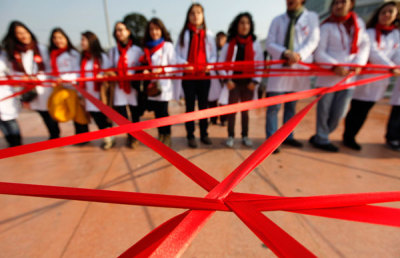Based on 45 Cases, Federal Officials Want to Spend $20 Billion on AIDS Drugs

About $6 billion per year is now spent on a cocktail of drugs to treat "HIV disease"—a positive blood test for antibody for human immunodeficiency virus, the accepted cause for AIDS. Treatment generally starts when the patient's CD4 white blood cell count drops below 350-500. (Normal is 500 to 1,200 per cubic millimeter.) But if we didn't wait for this, we could spend $20 billion.
A front-page story in The New York Times trumpets a call to start treatment immediately, based on the cleverly named START trial (Strategic Timing for Antiretroviral Treatment), which was designed to test whether patients who got immediate treatment did better than those for whom treatment was delayed. Some 4,685 HIV-positive persons in 35 countries, of median age 36, were involved.
The AIDS industry and its government allies were just waiting for evidence to justify a change in policy. Dr. Anthony S. Fauci, director of the National Institute for Allergy and Infectious Disease, which sponsored the trial, said he had had "no doubt how it was going to turn out." The trial was stopped early, when a (statistically) significant difference of 53 percent favoring the treatment group was announced .
Many patients have been reluctant to start early treatment because of drug side effects. Newer regimens are more tolerable. The 53 percent difference is likely to
persuade many to opt for immediate treatment.
But the "53 percent" represents just 45 individuals. At the time the study was stopped, 86 of those in the deferred-treatment group had died, developed AIDS, or suffered a serious non-AIDS event like heart, liver or kidney disease or cancer, vs. only 41 of those in the immediate treatment group.
As in many other studies of this type, enthusiastic researchers cite the relative risk reduction (53 percent), which looks much more impressive than the absolute risk reduction from about 3.67 percent to about 1.75 percent—a difference of less than 2 percent.
Note that many of the adverse outcomes in study patients can be caused by antiretroviral drugs, especially with prolonged use. These include heart disease, liver damage, and cancer—and also premature aging and cognitive impairment. Had the study been continued another year or so until completion—or better still for 5 more years, the outcome might have been different.
Early treatment advocates also say it prevents disease transmission to a sexual partner. For this, the relative risk reduction, 96 percent, looks even more impressive. "Overwhelming," said Fauci. That trial was also terminated early.
It involved 1,763 couples, 90 percent of whom were heterosexual, in 13 cities on four continents. One member of each couple was HIV-positive; the other was not. In half the couples, the HIV-positive partner was put on antiretroviral drugs immediately after a positive test was obtained. In the other half, treatment was started only when the CD4 count dropped below 250.
In 28 of the couples, the HIV-negative person became positive for the partner's strain of the virus; in 27, antiretroviral treatment had not been started. This means that seroconversion did NOT occur in about 880 of 881 couples getting treatment (99.8 percent) or in 854 of 881 of untreated couples (96.9 percent), for an absolute difference of less than 3 percent.
Based on these limited results, some advocate treating 40 million people worldwide, both to improve the health and longevity of HIV-positive people and to stop the spread of AIDS. Additionally, universal screening is called for to identify candidates for therapy—forgetting that in low-risk individuals, a positive result is most likely a false positive.
This type of reasoning is not limited to AIDS. For example, an influential trial of statin drugs for preventing cardiovascular disease was stopped after about 2 years. That was far too soon to detect premature aging, cognitive impairment, or many other long-term drug effects. Again, the relative risk reduction of some 36 percent is touted, and the absolute risk reduction of less than 2 percent is not mentioned.
Only one result of policy based on such research is certain: a vast expansion of the market for expensive drugs to treat lab test results and "risk factors," rather than apparent disease. The effect on patients is unknown, but likely not good.





















